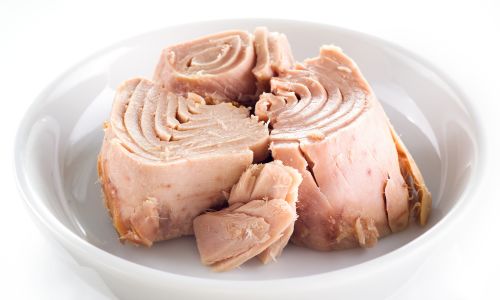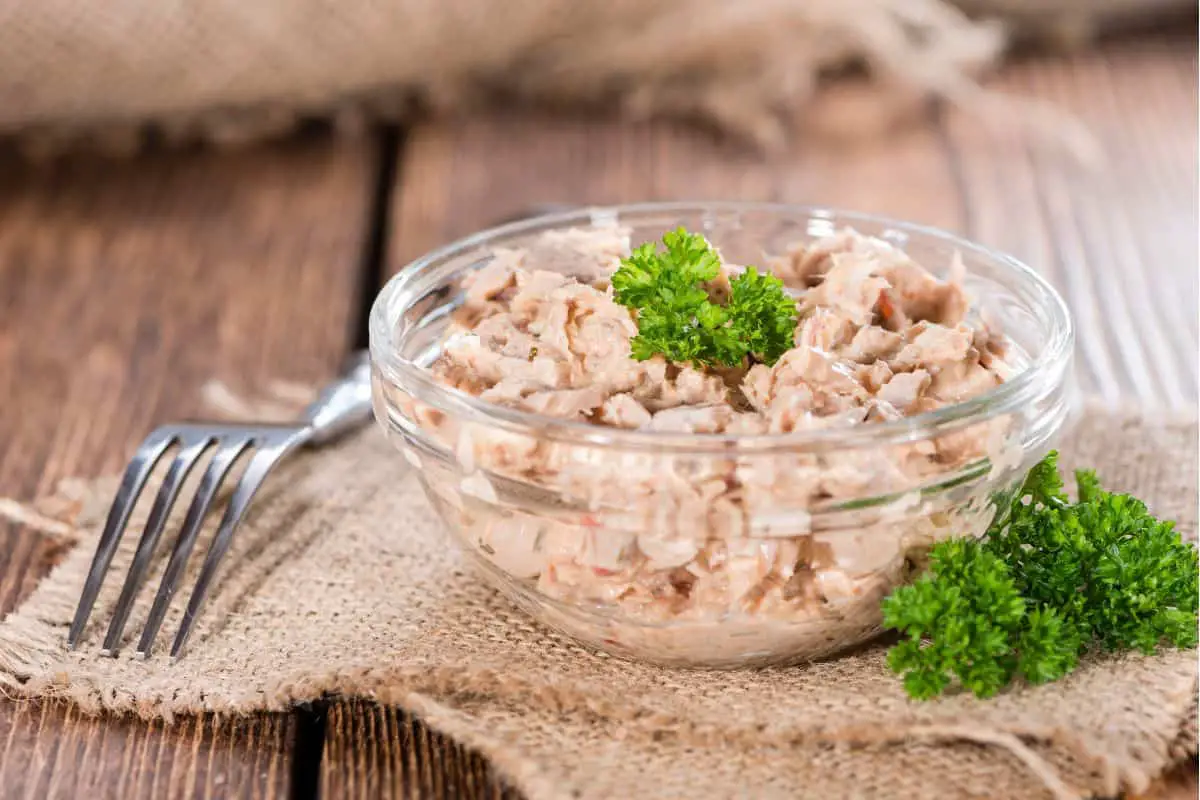Light tuna is a popular and versatile protein source, but many people are unaware of its nutritional benefits and differences compared to other types of tuna. In this comprehensive guide, we’ll explore what light tuna really means, its health benefits, potential risks, and how to choose the best light tuna for your needs.
Light tuna is a term that refers to smaller tuna species such as skipjack and yellowfin, which are lower in mercury and have a milder flavor than larger tuna like albacore. It is a healthy protein source, rich in omega-3 fatty acids, vitamins, and minerals. However, it is essential to consume light tuna in moderation due to its mercury content and choose sustainably sourced options.
What does light tuna mean?
Light tuna is a classification of tuna that includes smaller species like skipjack and yellowfin. These species have a lighter color and milder flavor compared to larger tuna like albacore or bluefin, which are often referred to as “white tuna.” Light tuna is generally cheaper and more abundant than white tuna, making it a popular choice for canned tuna products.
Which is better: white or light tuna?
Both white and light tuna have their advantages, depending on individual preferences and nutritional needs. White tuna, specifically albacore, has a firmer texture and a richer flavor, making it more desirable for some dishes. However, light tuna has a lower mercury content and is often more affordable, making it a better option for frequent consumption.
Is light tuna good for you?
Yes, light tuna is a healthy protein source that offers several nutritional benefits:
- Rich in omega-3 fatty acids: Light tuna contains EPA and DHA, which are essential for brain function, cardiovascular health, and reducing inflammation.
- High-quality protein: Tuna provides all essential amino acids, making it a complete protein source that supports muscle growth and repair.
- Low in calories and fat: Light tuna is a lean protein, making it suitable for weight management and low-fat diets.
- Vitamins and minerals: Tuna is a good source of vitamins like B12, niacin, and B6, as well as minerals like selenium, phosphorus, and potassium.
What is the healthiest tuna to eat?
When it comes to choosing the healthiest tuna, consider the following factors:
- Mercury content: Light tuna, such as skipjack and yellowfin, has lower mercury levels than larger species like albacore or bluefin. Consuming lower-mercury tuna reduces the risk of mercury-related health issues.
- Sustainability: Opt for tuna from sustainable sources, such as those certified by the Marine Stewardship Council (MSC), to support responsible fishing practices and protect marine ecosystems.
- Processing: Choose tuna packed in water or olive oil, rather than vegetable oil or sauces, to avoid excess calories and unhealthy fats.

Is light tuna high in mercury?
While light tuna has lower mercury levels than larger tuna species like albacore or bluefin, it still contains trace amounts of the heavy metal. Mercury accumulates in fish as they consume other marine life, and larger, longer-lived species tend to have higher concentrations.
Is it OK to eat light tuna every day?
Due to its mercury content, it is not recommended to eat light tuna every day. The FDA advises that adults can safely consume up to 12 ounces (340 grams) of low-mercury fish, like light tuna, per week. Pregnant women, nursing mothers, and young children should consume even smaller amounts to reduce the risk of mercury-related health issues.
How many times a week can you eat light tuna?
As a general guideline, it is safe to consume two to three servings of light tuna per week for most adults. Each serving should be about 4 ounces (113 grams) of cooked tuna or 2.5 ounces (70 grams) of drained canned tuna. Pregnant women, nursing mothers, and young children should consume even smaller amounts, as mentioned earlier.
Is light tuna real tuna?
Yes, light tuna is indeed real tuna. The term “light tuna” simply refers to the smaller species of tuna, like skipjack and yellowfin, which have a lighter color and milder flavor compared to larger species such as albacore or bluefin.
Is light tuna safer than white tuna?
In terms of mercury content, light tuna is generally considered safer than white tuna. Smaller tuna species, like skipjack and yellowfin, accumulate less mercury than larger species like albacore or bluefin. However, it is still essential to consume light tuna in moderation to minimize mercury exposure.
Popular light tuna brands and products
Several brands offer light tuna products, with varying quality and sustainability practices. Some popular light tuna brands and products include:
- StarKist Chunk Light Tuna in Water: A widely available and affordable option, StarKist light tuna is wild-caught and comes in easy-to-open pouches or cans.
- Bumble Bee Premium Light Tuna in Water: Bumble Bee offers responsibly sourced, wild-caught light tuna, both in cans and convenient snack packs.
- Genova Tonno Solid Light Tuna in Olive Oil: For a more premium option, Genova offers solid light tuna packed in olive oil, which adds flavor and healthy fats.
- Wild Planet Skipjack Light Tuna: This brand is known for its commitment to sustainable fishing practices and offers pole-and-line caught skipjack tuna.
- Safe Catch Elite Wild Tuna: Safe Catch tests each tuna for mercury levels, ensuring the lowest mercury content possible. Their Elite Wild Tuna is a popular choice for health-conscious consumers.
- Ocean Naturals Skipjack Chunk Light Tuna in Water: Committed to responsible sourcing, Ocean Naturals offers skipjack light tuna that is pole and line caught. Their products also carry the MSC certification for sustainability.
- 365 Everyday Value Light Tuna in Water: Whole Foods Market’s store brand offers light tuna in water that adheres to their strict quality standards and responsible sourcing guidelines.
- Trader Joe’s Albacore Tuna in Water: While not technically a light tuna product, Trader Joe’s Albacore Tuna has gained popularity for its quality, taste, and affordability. The company follows sustainable fishing practices, and their tuna is dolphin-safe.
- American Tuna Pole-Caught Wild Albacore: Another albacore option, American Tuna is committed to sustainability by using pole-and-line fishing methods. Their products are MSC certified and traceable from ocean to can.
When choosing a light tuna product, prioritize brands that emphasize sustainability, quality, and responsible fishing practices. Consult resources like the Monterey Bay Aquarium’s Seafood Watch or look for certifications such as the MSC label to make informed decisions about your seafood consumption.
Remember to always check labels for information on fishing methods, species, and origin, and keep in mind the consumption guidelines for light tuna to minimize mercury exposure. By doing so, you can enjoy the numerous health benefits of light tuna while supporting sustainable fishing practices.
Why is light tuna cheaper?
Light tuna is generally cheaper than white tuna for several reasons:
- Abundance: Light tuna species like skipjack and yellowfin are more abundant than larger species like albacore or bluefin, making them easier and less expensive to catch.
- Demand: White tuna, particularly albacore, is often preferred for its richer flavor and firmer texture, which can drive up its price due to higher demand.
- Processing: Light tuna is often sold as flaked or chunked meat, whereas white tuna is typically sold as solid fillets or steaks, which require more processing and thus, can be more expensive.
Despite being more affordable, light tuna still offers excellent nutritional benefits and can be a delicious and versatile protein source in various dishes.
Storage and Shelf Life of Light Tuna
When it comes to stocking up on light tuna, understanding proper storage and shelf life is essential to ensure that you are consuming a fresh and safe product. Using the keywords provided, let’s explore the storage and shelf life of various light tuna products.
Canned Light Tuna: A Convenient Option
Canned light tuna, such as StarKist Chunk Light Tuna in Water, Bumble Bee Premium Light Tuna, and Cento Tuna, offers a convenient and non-perishable option for tuna lovers. To ensure the best quality, store canned tuna in a cool, dry place away from direct sunlight. Most canned tuna products have a shelf life of 2-5 years when stored properly. Be sure to check the “best by” or “expiration” date printed on the can to determine the ideal consumption timeframe.
Pouches: Easy-to-Open and Portable
Light tuna packed in pouches, like StarKist Tuna Creations, provides a portable and easy-to-open alternative to canned tuna. These pouches can be stored similarly to canned tuna – in a cool, dry place away from sunlight. The shelf life of tuna in pouches is typically around 1-2 years. Always check the packaging for a “best by” or “expiration” date to know when it’s best to consume the product.
Light Tuna in Oil vs. Water
Both light tuna packed in oil, such as Genova Tonno Solid Light Tuna in Olive Oil or Pastene Solid Light Tuna, and light tuna packed in water offer similar storage guidelines and shelf life. However, tuna in oil may have a slightly richer taste and a different texture compared to tuna in water. The choice between the two varieties depends on personal preference and dietary considerations.
Low Sodium and Specialty Light Tuna Products
Low sodium light tuna, like StarKist Low Sodium Tuna, and other specialty products, such as Rio Mare Lemon Pepper Tuna, should be stored and consumed following the same guidelines as other canned or pouched light tuna products. Be sure to check the packaging for specific storage instructions and shelf life information.
Storing Opened Tuna
Once you’ve opened a can or pouch of light tuna, it’s essential to store any leftovers properly. Transfer the opened tuna to an airtight container and refrigerate it immediately. When stored correctly, opened light tuna can last for up to 3-4 days in the refrigerator.
Light Tuna Sustainability and Environmental Impact
As tuna is a popular food source worldwide, it’s crucial to consider the environmental impact of our consumption. Light tuna, sourced from smaller and faster-growing species, is generally more sustainable than white or albacore tuna. However, overfishing, bycatch, and habitat destruction remain concerns in the tuna industry.
How to Choose Sustainable Light Tuna
When shopping for light tuna, look for products with the Marine Stewardship Council (MSC) certification or those labeled as “pole and line caught.” These labels indicate that the tuna was sourced from well-managed and sustainable fisheries. Additionally, opt for brands that prioritize responsible fishing practices and transparent supply chain information.
Supporting Sustainable Fishing Practices
As consumers, we can support sustainable fishing practices by choosing responsibly sourced seafood, including light tuna. By purchasing products with third-party certifications and from brands that prioritize environmental stewardship, we can help protect our oceans and ensure the long-term availability of seafood for future generations.
Light Tuna Recipe Ideas
To make the most of light tuna’s versatility, consider incorporating it into a variety of dishes. Here are some delicious and healthy recipe ideas that showcase the flavors of light tuna:
Tuna Salad
Combine canned light tuna with chopped celery, red onion, and a mix of mayonnaise and Greek yogurt for a creamy tuna salad. Serve it on a bed of lettuce or in a sandwich for a quick and satisfying meal.
Tuna Pasta
Create a simple and hearty pasta dish by mixing light tuna with cooked pasta, cherry tomatoes, olives, and a drizzle of olive oil. Add some grated Parmesan cheese and fresh basil to elevate the dish.
Tuna-Stuffed Avocado
For a nutrient-packed lunch, halve and pit an avocado, then stuff the center with a mixture of light tuna, diced red bell pepper, and a touch of mayonnaise. Sprinkle with some chopped cilantro and a squeeze of lime juice for added flavor.
Tuna and White Bean Salad
Combine light tuna with cannellini beans, thinly sliced red onion, and chopped parsley. Dress the salad with a mixture of olive oil, red wine vinegar, and Dijon mustard for a light and refreshing meal.
Tuna Melt
For a warm and comforting sandwich, spread a mixture of light tuna, mayonnaise, and chopped green onions onto a slice of bread, then top with a slice of your favorite cheese. Broil the sandwich in the oven until the cheese is melted and bubbly.



